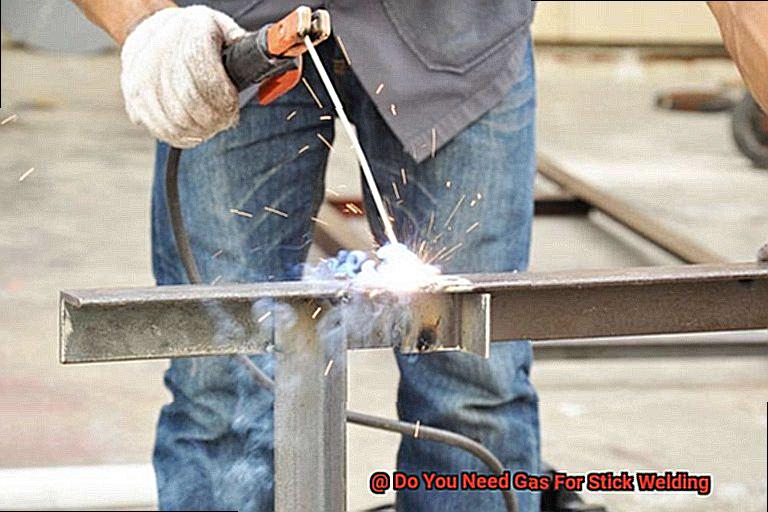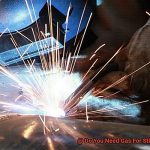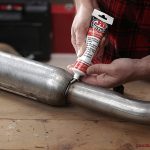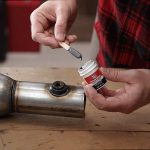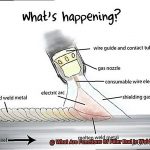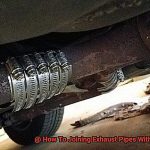Are you ready to dive into the world of stick welding? If so, you may be wondering about the role of gas in this popular welding method. It’s a question that has sparked many debates among welders: do you need gas for stick welding?
Stick welding, also known as shielded metal arc welding (SMAW), is a versatile technique used to weld thick metal objects that require high heat. However, not all stick welding projects require gas. The decision to use gas or not depends on the specific project and desired outcome.
In this blog post, we’ll explore the different types of stick welding and when gas is necessary for each method. We’ll provide an in-depth analysis that’s accessible to both beginners and experts alike.
Whether you’re looking to expand your welding skills or just starting out, we’ve got you covered. By the end of this post, you’ll have a clear understanding of whether or not gas is needed for your upcoming stick welding project. With our guidance, you can confidently tackle any welding challenge and achieve professional-grade results.
So let’s get started on this fascinating journey through the world of stick welding.
What is Stick Welding?
Contents
Stick welding, also known as Shielded Metal Arc Welding (SMAW), is an exciting and practical way to join metals. It’s like using a magic wand to fuse metal together, but instead of magic, it uses a special electrode coated in flux to create a protective gas shield around the weld pool as it melts.
The secret to stick welding lies in the flux coating on the electrode. As the electrode melts, the flux coating releases a combination of gases that form a protective shield around the weld pool. This shield prevents oxidation and other impurities from affecting the quality of the weld. It’s like having a force field protecting the weld from any external factors that could compromise its integrity.
One of the most significant benefits of stick welding is that it doesn’t require an external shielding gas. Unlike other welding processes that need a flow of gas to protect the weld pool, stick welding uses the flux coating to provide all the necessary protection. This makes it ideal for outdoor welding applications where wind and other external factors can affect gas flow.
Additionally, stick welding is an affordable option for those who do not have access to specialized equipment or gas cylinders. All you need to get started is a welding machine, electrodes, and safety gear. It’s like having a superpower in your tool kit that doesn’t break the bank.
The process of stick welding involves striking an arc between the electrode and the workpiece, creating intense heat that melts both materials. As the weld cools, it solidifies and fuses the two pieces of metal together. The flux coating on the electrode also helps remove impurities from the weld, improving its strength and quality.
What is Shielded Metal Arc Welding (SMAW)?
When it comes to welding, Shielded Metal Arc Welding (SMAW) is a true hero. This process uses a consumable electrode coated in flux to join metals, and the flux acts as a protective shield around the weld, preventing atmospheric gases from contaminating it. This means that SMAW doesn’t require an external gas supply, making it a popular choice for outdoor or remote welding jobs.
The consumable electrode used in SMAW looks like a stick, which is why it’s often referred to as “stick welding.” The electrode is connected to a power source that melts it and creates the weld. As the electrode melts, it releases metallic particles and gases that form the superhero cape-like protective shield around the weld.
SMAW is versatile and can be used with a variety of metals, including steel, stainless steel, cast iron, and some non-ferrous metals. It’s commonly used in construction, fabrication, repair work, and pipeline welding. Additionally, SMAW’s simplicity and portability make it useful for welding in difficult-to-reach areas and easily transported to job sites.
However, SMAW does have its limitations. The process produces slag that must be removed after welding, which can be time-consuming. Additionally, the slow deposition rate of SMAW means that it may not be suitable for large-scale welding projects.
Despite these limitations, SMAW remains a popular and widely-used welding process. Its versatility and simplicity are undeniable advantages.
Do You Need Gas For Stick Welding?
One question that many people ask is whether or not gas is needed for this technique. The good news is that you don’t need gas for stick welding.
Stick welding utilizes an electrode that has a flux coating which produces a shield of gas when it melts and fuses with the base material. This process protects the weld from contamination by atmospheric gases like oxygen and nitrogen, ensuring a smooth, clean finish and removing impurities from the weld.
While gas isn’t necessary for stick welding, there are situations where using a shielding gas can be beneficial. For example, if you’re welding in a windy or drafty area, a shielding gas can help protect the weld from contamination by air currents. Additionally, specialized electrodes used for materials such as stainless steel or aluminum may require the use of a shielding gas to achieve optimal results.
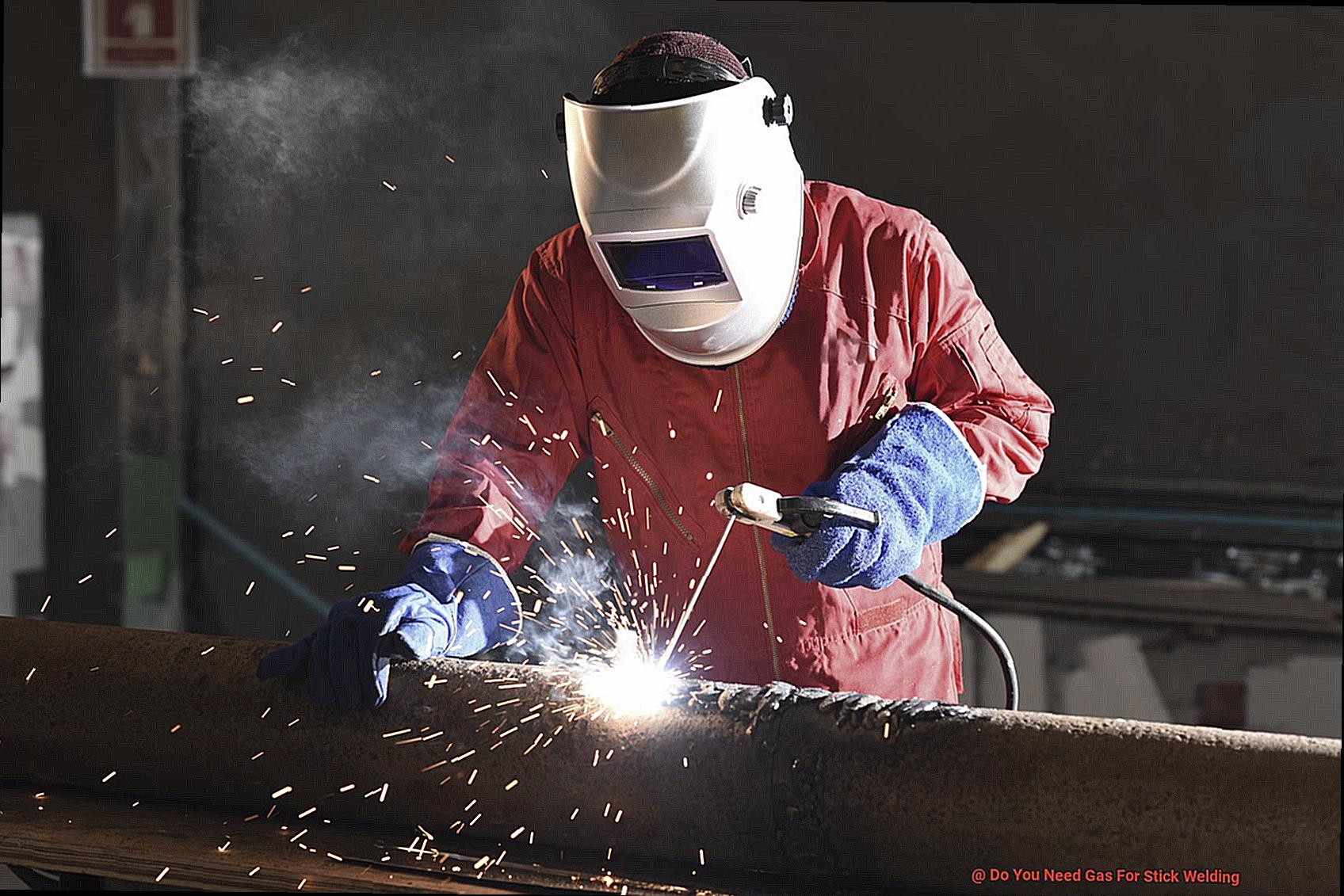
But fear not. If you’re just starting out with stick welding, you don’t need to worry about purchasing any additional equipment or supplies beyond your basic welding setup. Stick welding is designed to be versatile and convenient, making it perfect for outdoor and remote welding jobs where gas might not be readily available.
How Does The Flux Coating Work?
Stick welding is a versatile and convenient technique that enables you to create strong and reliable welds without the need for an external gas supply. But what makes it possible? The secret weapon is the flux coating, which plays a pivotal role in the stick welding process.
The flux coating is a powerful mixture of minerals and chemicals that are applied to the electrode. It serves several purposes, including shielding the weld from atmospheric contamination, stabilizing the arc, and providing a protective layer over the molten metal. It’s like a superhero cape that protects your weld from damage.
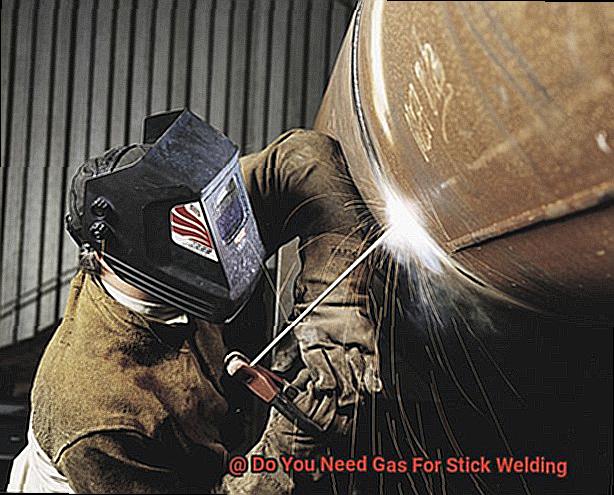
So, how does the flux coating work its magic? When you strike an arc with the electrode, the flux coating begins to melt and create a layer of gas around the weld pool. This layer of gas acts like a barrier that prevents oxygen and other gases from contaminating the weld, ensuring a clean and strong bond.
But wait, there’s more. The flux coating also contains deoxidizing agents that remove any impurities from the metal. This ensures that your weld is clean and strong, without any weak spots or defects.
As the electrode heats up, the flux coating continues to melt and form a protective layer over the molten metal. This layer solidifies as the weld cools, creating a force field against moisture and other contaminants. It’s like having a shield that keeps your weld safe and strong.
Different types of flux coatings are available for different applications. Some coatings are designed for welding in windy or outdoor conditions, while others are meant for welding in confined spaces or with specific types of metals. Choosing the right type of flux coating is critical to achieving a quality weld.
Advantages of Using Stick Welding Over Other Techniques
Shielded Metal Arc Welding (SMAW), or stick welding, is a popular choice among welders due to its several advantages over other welding techniques. One of the most significant benefits of stick welding is that it does not require external shielding gas like TIG or MIG welding. This makes it more convenient and cost-effective for welding in outdoor or remote locations where transporting bulky gas cylinders can be challenging or impossible.
But that’s not all – stick welding is also highly versatile. It can weld a wide range of materials, including steel, cast iron, and aluminum, making it a popular choice across various industries. Even hobbyists and DIY enthusiasts can give it a try as it requires minimal equipment and is relatively easy to learn.
Another advantage of stick welding is its ability to produce deep penetration welds. This means that the weld penetrates deep into the material being welded, resulting in a stronger and more durable weld than other types of welding techniques can achieve. Additionally, stick welding can be used for both thick and thin materials, making it an ideal option for various welding projects.
And let’s not forget about its flexibility – stick welding can be used in almost any position, including flat, horizontal, vertical, and overhead positions. This makes it an ideal option for welding in tight spaces or hard-to-reach areas.
In conclusion, stick welding offers several advantages over other types of welding techniques. Its versatility, convenience, and suitability for welding in almost any position make it an ideal option for various industries and applications. And the fact that it does not require any external shielding gas makes it a cost-effective option for outdoor or remote locations. So why wait?
Outdoor Applications Of Stick Welding
Imagine the sun shining down on you as you work on a stunning metal sculpture project outside. With your trusty stick welder by your side, you’re ready to create something truly magnificent. But have you considered how wind and safety measures can affect your outdoor stick welding experience?
It’s essential to understand that wind can greatly impact the quality of your weld. Even though stick welding is versatile, the shielding gas blowing away due to wind gusts can result in porosity and ruin your welding project. To prevent this from happening, use a windbreak or weld screen to protect your weld from the wind.
Safety is also crucial when it comes to stick welding outdoors. Welding produces intense light and heat that can harm both you and anyone nearby. Make sure to wear proper personal protective equipment (PPE) like a welding helmet, gloves, and clothing covering any exposed skin. Don’t compromise on safety measures – they could save you from serious injury.
When it comes to gas usage in outdoor stick welding applications, it depends on the specific project and materials being welded. For thicker materials, gas may be necessary for proper shielding and to prevent oxidation. However, for thinner materials or smaller projects, gas may not be required at all.
kOBotY267Mc” >
Conclusion
In conclusion, stick welding is a versatile and practical technique that offers many advantages over other welding methods. One of the biggest benefits is that it doesn’t require an external shielding gas, making it more convenient and cost-effective for outdoor or remote locations where transporting bulky gas cylinders can be challenging. Stick welding can weld a wide range of materials, including steel, cast iron, and aluminum, which makes it popular across various industries.
The flux coating on the electrode plays a crucial role in stick welding by creating a protective shield around the weld pool as it melts. This shield prevents oxidation and other impurities from affecting the quality of the weld. Different types of flux coatings are available for different applications to ensure you achieve quality welds.
While gas isn’t necessary for stick welding, there are situations where using a shielding gas can be beneficial. For example, if you’re welding in a windy or drafty area, a shielding gas can help protect the weld from contamination by air currents. Specialized electrodes used for materials such as stainless steel or aluminum may also require the use of a shielding gas to achieve optimal results.
In summary, understanding when to use gas in stick welding depends on your specific project and desired outcome. By selecting the appropriate type of flux coating and using proper welding techniques, you can create durable and long-lasting welds with ease. Stick welding is an affordable option that requires minimal equipment and is relatively easy to learn – making it ideal for both professionals and hobbyists alike.
